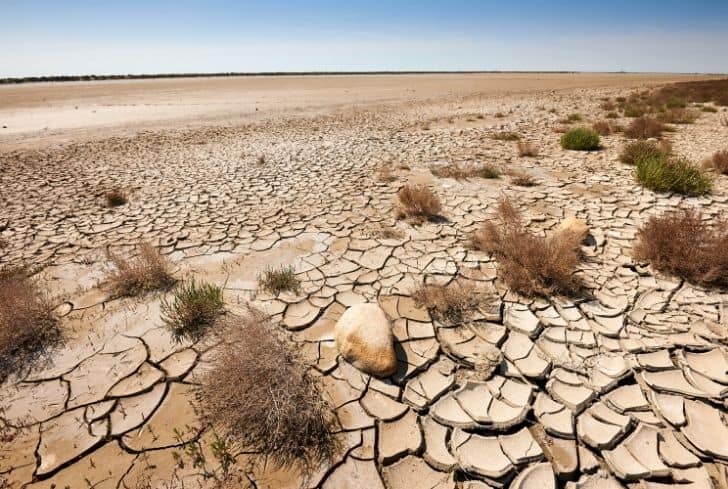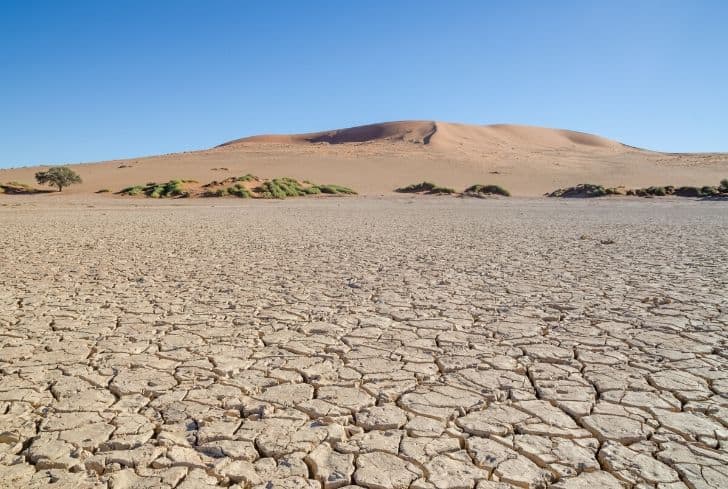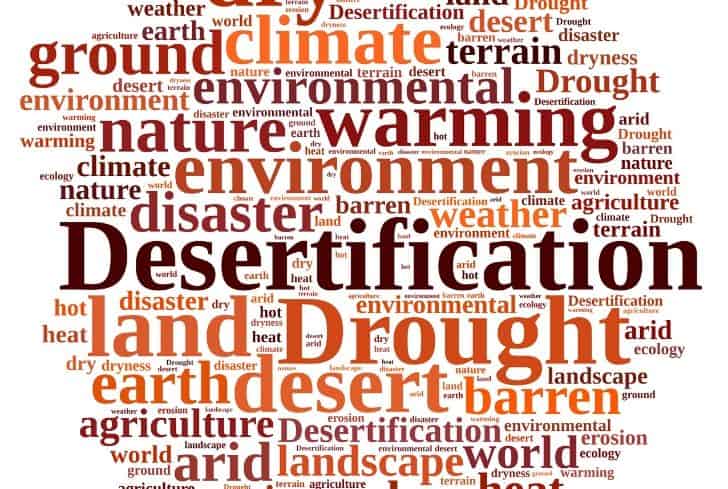Desertification is defined as a process of land degradation in arid, semi-arid, and sub-humid areas due to various factors, including climatic variations and human activities.
Or, to put it in another way, desertification results in the persistent degradation of dryland and fragile ecosystems due to man-made activities and variations in climate.
Desertification, in short, is when land that was of another type of biome turns into a desert biome because of changes of all sorts. A huge issue that many countries have is the fact that there are large pockets of land that are going through a process that is known as desertification.
Overgrazing is the major cause of desertification worldwide. Other factors that cause desertification include urbanization, climate change, overuse of groundwater, deforestation, natural disasters, and tillage practices in agriculture that make soils more vulnerable to wind.
Desertification affects topsoil, groundwater reserves, surface runoff, and human, animal, and plant populations. Water scarcity in drylands limits the production of wood, crops, forage, and other ecosystem services to our community.
We already have the statistics for the future: the growth percentages of pollution, overpopulation, desertification. The future is already in place.
– Gunther Grass
According to UNESCO, desertification is a threat to one-third of the earth’s land surface. It affects the livelihood of millions of people who depend on the benefits of ecosystems that drylands provide.
In this article, we’re going to give you an idea as to what are the causes of desertification, the effects that desertification has, and what we can do in order to deal with the problem at hand. Let’s take a closer look at all of these topics.
According to Wikipedia,
“Desertification is a type of land degradation in which a relatively dry land region becomes increasingly arid, typically losing its bodies of water as well as vegetation and wildlife.
It is caused by various factors, such as climate change and human activities. Desertification is a significant global ecological and environmental problem.”
Various Causes of Desertification
Some of the common causes of desertification include:
1. Overgrazing
Animal grazing is one of the main reasons most areas are starting to become desert biomes. If too many animals are overgrazing in certain spots, it makes it difficult for the plants to grow back, which hurts the biome and makes it lose its former green glory.
2. Deforestation
When people want to move into an area or need to make houses and do other tasks, they usually cut trees to create space or supply timber for construction.
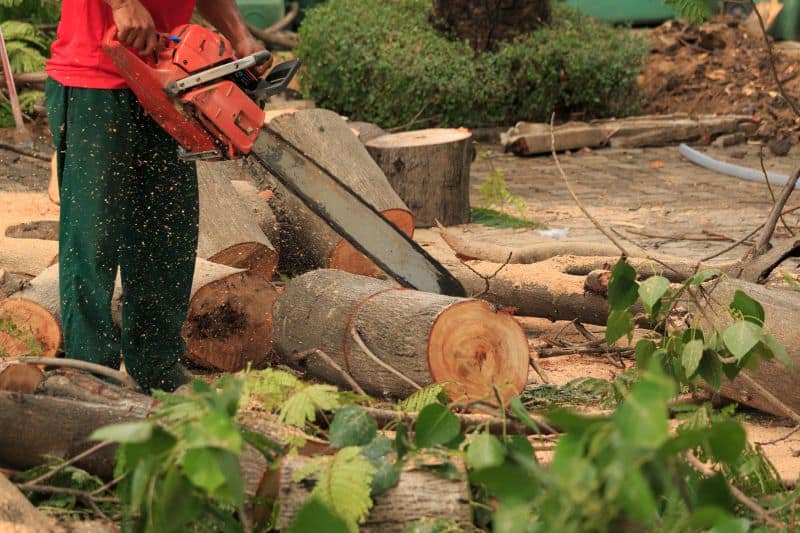
Sadly, most people don’t follow the “Cut 1, plant 2” principle when doing this, causing a gradual decrease in tree population and eventually desertification. Without the plants (especially the trees) around, the rest of the biome cannot thrive.
3. Farming Practices
Certain farmers lack knowledge in effectively utilizing the land, leading them to essentially deplete all resources from one plot before moving on to the next. This approach strips the soil of its nutrients, increasing the risk of desertification in the farming area.
4. Excessive Use of Fertilizers and Pesticides
Using excessive amounts of fertilizers and pesticides to maximize crop yields in the short term often leads to significant damage to the soil.
In the long run, this may turn a place from being arable into arid, affecting its ability to support farming practices.
5. Overdrafting of Groundwater
Groundwater is the largest water source and comprises the freshwater found underground.
Over drafting happens when groundwater is extracted faster than it is able to naturally replenish. With time, this imbalance leads to its depletion, eventually causing desertification.
6. Urbanization and Other Types of Land Development
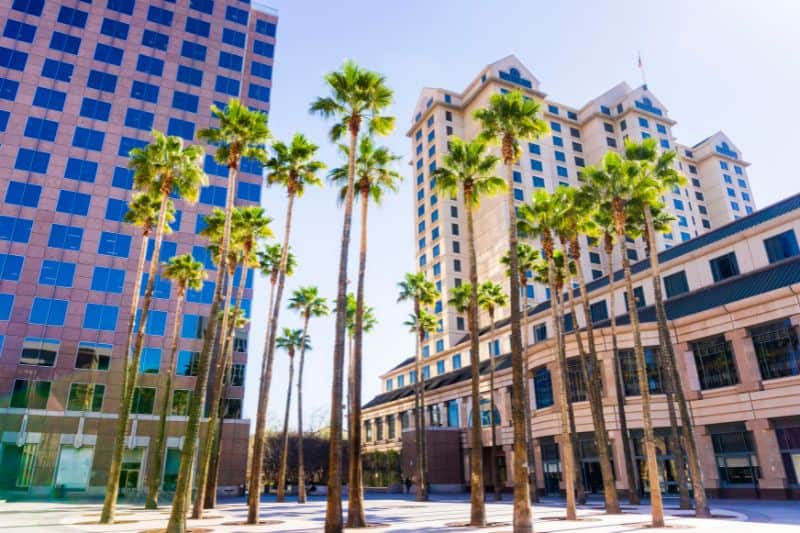
As mentioned above, development can cause people to go through and kill plant life. It can also cause issues with the soil due to chemicals and other things that may harm the ground. As areas become more urbanized, there are fewer places for plants to grow, thus causing desertification.
7. Climate Change
Climate change plays a huge role in desertification. As the days get warmer and periods of drought become more frequent, desertification becomes more and more imminent.
In fact, unless climate change is slowed down, huge areas of land will wind up as deserts, and some of these areas may even become uninhabitable as time goes on.
8. Stripping the Land of Resources
If an area of land has natural resources like natural gas, oil, or minerals, it attracts mining activity. This usually strips the soil of nutrients, which in turn kills the plant life, and eventually initiates the process of becoming a desert biome.
9. Natural Disasters
There are some instances when deserts occur as a natural disaster other than a response to what’s happening in the environment. In such cases, there isn’t much that people can do except work to try and help rehabilitate the land after it has already been damaged by nature.
10. Soil Pollution
Soil pollution is a significant cause of desertification. Most plants are quite sensitive to their natural living conditions.
As such, when soil becomes polluted due to various human activities, these plants may die, causing the area to suffer from desertification in the long run.
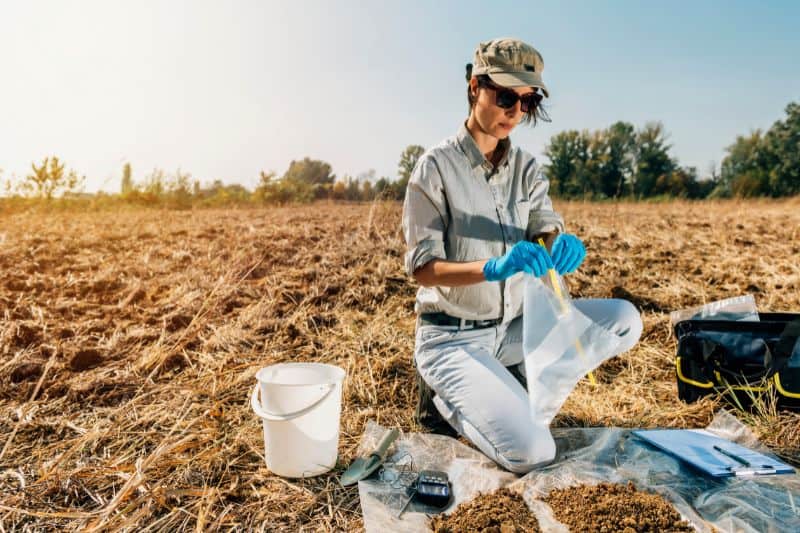
The higher the pollution level, the more likely it is for sensitive plants to die, and thus, the higher the chances of desertification from soil pollution.
11. Overpopulation and Excessive Consumption
The growing world population brings forth a high growing food demand. Thus to fulfill our demand, we have to optimize our farming processes to harvest even higher crop yields.
However, this excessive optimization of farming can hurt the soil and may even turn the land into a desert depending on the pressure put on the land and the chemicals used to enhance its yield.
12. Mining
Mining is another big reason for desertification. Large amounts of resources have to be extracted by industries to meet our demand for material goods.
For mining, large areas of land have to be used, which causes deforestation and pollution of the nearby areas.
As natural resources are extensively extracted, and mining practices cease to be profitable, the soil undergoes substantial damage, transforming the land into an arid state that might be irrecoverable, leading to desertification.
Devastating Effects of Desertification
Of course, desertification has numerous negative impacts on the environment and all life forms connected to it.
Some of these effects include:
1. Farming Becomes Next to Impossible
Once an area becomes a desert, supporting farming without deploying special technologies becomes almost impossible. As a result, most farmers are compelled to sell their land and abandon the desert regions.
2. Decrease in Crop Yields
A major effect of desertification is the decrease in crop yields. Once land turns from arable to arid, it is often no longer suitable for farming purposes anymore.
In turn, many farmers may lose their livelihood since they often solely rely on farming as their single source of income. If their land becomes arid, they may no longer be able to provide sufficient crop yields to make a living out of it.
3. Hunger
Since desertification inhibits farming, food will likely become scarce in the affected areas. When desertification is too severe, and food is hardly available, some people and animals may starve to death, while some are forced to relocate to find food.
4. Flooding
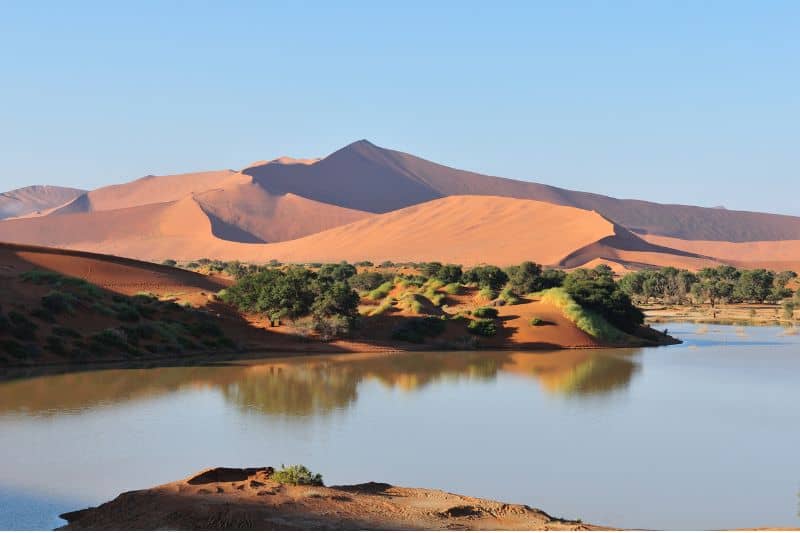
The absence of plant life in an area increases the likelihood of flooding. While not all deserts are dry, those with wet conditions may encounter significant flooding due to the absence of vegetation to impede water accumulation and dispersion. This flooding can also adversely impact the water supply, as we will explore in the following discussion.
5. Poor Water Quality
When an area becomes a desert, the water quality deteriorates. This is because plant life plays a significant role in keeping the water clean and clear; without its presence, it becomes a lot more difficult for you to be able to do that.
6. Overpopulation
When areas become deserts, animals and people may move to areas where they can thrive, causing crowding and overpopulation.
The surge in population leads to higher food demand, again attracting desertification in their new habitat. Without proper measures, this desertification cycle can perpetuate and expand, with each cycle bringing in more victims.
7. Poverty
All of the issues we’ve discussed above (related to the problem of desertification) can lead to poverty if it is not kept in check. Where the demand for food and water is much higher than the demand, their prices are forced to go up.
That means people have to spend more money on things otherwise meant to be affordable, leaving them with little to no money to cater for their other needs.
8. Biodiversity Loss
In general, the destruction of habitats and desertification may also contribute to biodiversity loss. While some species can adjust to the altered environmental conditions properly, many can’t and may suffer from severe population decline.
9. Endangerment and Extinction of Species
Desertification results in a population decline, for which species may become endangered or even extinct. This problem is especially severe for species already endangered as the small number of remaining animals or plants may also die off over time, which may even lead to species extinction.
10. Destruction of Habitats
Desertification often leads to a loss of habitats for many animals and plants. Desertification may alter the living conditions of the local flora and fauna, making it impossible for animals and plants to sustain their populations.
After desertification, regions suffer from water shortages due to climate change, and animals may suffer and die since water is vital for all life on our planet.
Solutions to Desertification
Although the effects of desertification are numerous and severe, a lot can be done to curb or even mitigate the negative impact.
Here are some measures for dealing with desertification:
1. Policy Changes Related to How People Can Farm
In countries where policy change will actually be enforced on those in the country, policy change related to how often people can farm and how much they can farm in certain areas could be implemented to help reduce the problems often associated with farming and desertification.
2. Policy Changes to Other Types of Land Use

When utilizing land for natural resource extraction or human settlement, the governing policies should prioritize promoting the thriving of the land rather than allowing further harm to it. These policy changes may encompass sweeping reforms or be tailored to specific types of land use based on their unique requirements.
3. Education
In developing countries, education is an incredibly important tool that needs to be utilized to help people understand the best way to use the land they are farming on. By educating them on sustainable practices, more land will be saved from becoming desert.
4. Technology Advances
Research is the key to overcoming most of our environmental problems, and it applies to desertification also. In some cases, it’s challenging to try and prevent desertification from happening.
In those cases, there needs to be research and application of the latest technology that pushes the limits of what we currently know about the drivers of desertification. Advancements could help us find more ways to prevent the issue from becoming an epidemic.
5. Restricting Mining Practices
Mining often implies the destruction of large areas of land. Therefore it should be regulated by governments to keep the nature reserves intact and protect the natural habitats of many animals and plants. Thus, less land will be arid, and the desertification issue can be mitigated to a certain extent.
6. Putting Together Rehabilitation Efforts
We have several ways to rehabilitate the land that we’ve already pushed into desertification; it just takes some investment of time and money. By putting these together, we can prevent the issue from becoming even more widespread in the areas that have already been affected.
7. Reforestation
The areas that have been subject to deforestation in the past should be considered for reforestation. Planting trees in those areas would help curb the problem.
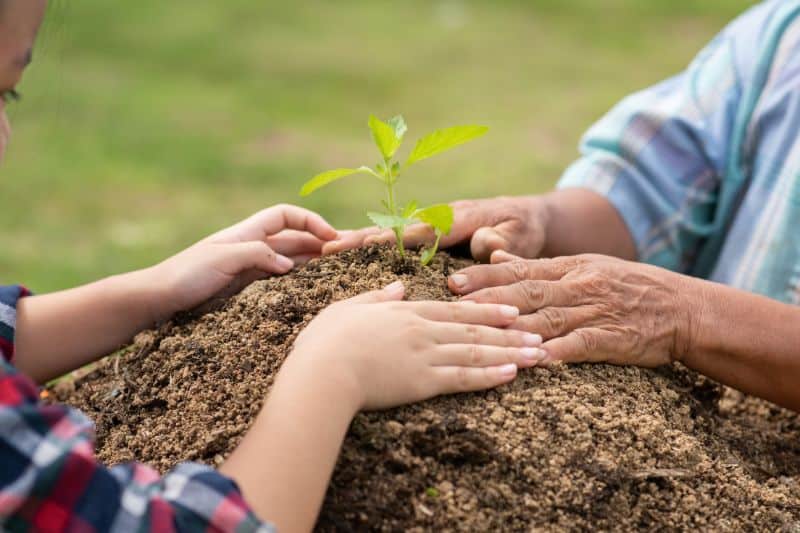
Trees will not only avert desertification but also serve as natural carbon dioxide storage spaces, slow down global warming, and contribute to maintaining a natural balance; all of which are important to the ecosystem.
8. Sustainable Practices to Prevent Desertification From Happening
There are plenty of sustainable practices that can be applied to those acts that may be causing desertification. By adding these to what we should be doing with land, we can ensure that we don’t turn the entire world into a desert.
Desertification is a huge problem that needs to be addressed accordingly, and if we take the time to do it now, we can prevent other problems from happening with it in the future.
By taking that critical look at desertification, we have the tools that we need in order to get through the processes effectively.
References:
